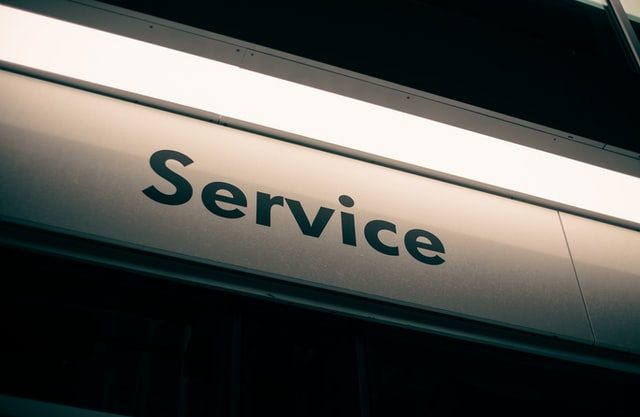Familiarity is among the many charms of growing up in a small town. One remembers the layout of the neighborhood market like the back of the hand, especially when one grew up watching one’s parents running errands.
A monthly trip to the usual salon, the regular electrician showing up for “emergencies,” and one’s father trying to catch hold of the friendly neighborhood plumber for that leak he tried fixing twice are common sightings for small-towners.
However, as a small-town person who is now a city dweller with nary an acquaintance around, the odd jobs are often left unattended till the end of time. We are neither skilled to get the odd chores taken care of nor as acquainted to the neighborhood to put a “guy” on the job.
Humble Beginnings
A little over eight years ago, three geniuses got together to have our prayers answered with the on-demand home services marketplace, Urban Clap. Identifying the cavity in the home services market, Abhiraj Singh Bhal, Varun Khaitan, and Raghav Chandra took it upon themselves to revolutionize the space. The essence of the startup was to make urban lives easier.
The likes of Just Dial, Yellow Pages, and Sulekha had been around for a while, but none had been successful in leaving its mark as a reliable service marketplace. These companies used to work with an aggregator who would then transfer the job to the professional service provider. A large percentage of the money would end up in the aggregator’s pockets in the process.
Just Dial follows a prepaid business model & has remained debt-free since its inception. How?
On the contrary, Urban Company connects users with professionals directly and hence, is able to have a successful revenue-generating business model. Today, Urban Company competes with HouseJoy, backed by Amazon. Another competitor, Quikr’s ‘AtHomeDiva,’ at-home beauty services platform, shut shop in 2019.
Urban Company started as a marketplace connecting customers with qualified, trusted professionals. The team created a concierge model wherein the customers would express their requirements via chat. However, this soon moved to a match-making engine.
In January 2020, Urban Clap repositioned itself as Urban Company to focus on seven key verticals capturing the company’s ambition to become a horizontal gig marketplace and expand its global footprint
How Urban Company has adopted full-stack approach in its business model?
In its operations, the Urban Company team realized (via Net Promoter Scores) that customers preferred the business model wherein a professional was dispatched to their doorstep with entire ownership of a timely, quality service resting with UC. Thus, paired with standard procedures and transparent pricing, the team arrived at its recipe for success.
Full stacking seems to be limited to high-tech companies and is not be confused with the concept of vertical integration being used by traditional “old-school” manufacturers. The primary difference is the focus on customer experience in the former concept.
In vertical integration, a manufacturer contract with suppliers to reduce costs and improve efficiency. The customer may get a better or a more affordable product, but the entire customer experience does not get taken care of.
The full-stack approach aims to control the customer experience using all the channels needed to deliver it. Instead of inventing and building technology and selling it to another business to bundle/augment their product or service, the tech startup can sell it directly to customers, sometimes by making it into a bundle of its own. Uber and Lyft are apt examples of such tech startups that reinvented the ecosystem.
Also, this model is different from a lean startup model wherein the startup runs on minimal complex planning and relies almost entirely on customer feedback to refine its product offering.
Amongst the many advantages of a full-stack startup, foremost is the capacity to grow since such a business is in control of its supply chain and customer experience. When the need to scale up arises, it can simply expand these dimensions by hiring further rather than sourcing more products from manufacturers.
A full-stack approach is one through which a startup seeks to eliminate as many intermediaries- logistical and commercial with a view of saving time and money. It improves the go-to-market turnaround time and engages with the customer better. This model holds a lot of promise, especially for startups aspiring to take incumbents head-on.
With this model, the startup is enabled to establish a relationship with the end consumer. In the absence of this cog, the startup might have had a valuable product but no scope of improvement basis customer feedback.
In 2019, UC went the full-stack route which meant that significant investment would be made concerning training, micro-financing, sourcing of branded products. The services that could not be converted to full-stack model and were basically lead-generation based were discontinued thereon. It was a bold decision for the startup as up until then; the revenue was split roughly 50 percent between the two kinds of services.
Adopting a full-stack model spells out that Urban Company takes end-to-end responsibility—from availability to quality of service, from standard training of professionals to seamless and transparent payment processes for them.
The full-stack model helped the company maintain quality standards irrespective of the professionals providing the service, ensuring customer satisfaction and building loyalty. The full-stack approach meant extensive investment by Urban Company in its partners concerning training, micro-financing, providing branded products and tools, and more.
Urban Company’s business model
Value Proposition
Urban Company vets its service providers to ensure maximum safety of its customers through thorough background checks and police verification of professionals that sign up on the platform. As the next step, mandatory pieces of training are conducted to ensure uniform service quality. During the lockdown, strict implementation of safety SOPs further strengthened customer belief in Urban Company.
Urban Clap’s focus was on expanding its value proposition in the early phases, rather than the more specific aspects of growing the number of daily active users and the number of professionals listed on the platform.
The strategy was to diversify offerings, expose users to a wide variety of professionals, market the app to the correct demographics and develop a reputation in the market as the one-stop solution to all sorts of services required for seamless urban living.
Products & Services
In the process, broadly, two categories of services were identified:
- One, standard services with relatively lower order values but a shorter purchase period – home cleaning and salon services, for instance.
- Two, customized services had a higher-order value but a more extended purchase time. While the former meant sending a selected professional to the customer’s house, the latter connected the customer to 3 to 5 relevant professionals. The user could go with one of their choosing.
UC now concentrates on home and beauty services that make up the largest revenue in 2019. The company also launched male grooming services in November 2019, delivering men’s salon products at its customers’ doorstep.
Revenue Model
UC’s revenue stream comprises of the following. The second and third revenue channels were added after the first couple of years.
- Commission: Contributing to around 85% of the total revenue, commission-based services are those where UC charges a certain percentage of the total price of the service to the service provider. The percentage rate varies from service to service.
- Reverse Auction: A specialist/service provider pays a fixed amount to promote one’s services. In these cases, the customers (users) do not pay immediately. They spend time learning and assessing the various specialists available and then pick one. The specialist then pays a fee to accept the service booking request that has come his way. Monetization is based entirely on the specialist’s ability to convince the user to book the service.
- Advertisement: An alternate source of revenue for UC is the advertisement fee that businesses, service providers, and suppliers pay in exchange for running their ads on the UC platform.
Expansion to Foreign Markets
Urban Company launched its services in Dubai in 2018, followed by setting up shop in Abu Dhabi. Similar demographics, mainly because of the Indian diaspora in these cities, compelled the startup to begin operations there. Also, the cost considerations made it a worthwhile move.
Customers in the UAE are not as price-sensitive as their Indian counterparts. Hence, UC can charge at least thrice the Indian prices with similar costs. Moving to Australia was a result of a similar idea too. The renaming exercise of Urban Clap to Urban Company was also done in 2020 to add a universal appeal to the at-home service provider.
Currently, UC operates in 53 cities across six countries with a fleet of over 32000 trained professionals and stands tall as Asia’s largest online home services platform.
What’s next for Urban Company?
From a meager beginning capital of Rs.10 lacs, Urban Company journeyed to being a unicorn with a $2.1 billion valuation after raising a $255 million Series F round in June 2021. UC recorded a growth of 13.3% in operating revenue to Rs 247.7 crore in FY21 from 218.6 crores in FY20. Urban Company’s net loss widened to Rs 249 crore in FY21 from Rs 155.18 crore in FY20 as the company’s employee benefit expenses soared more than 60%.
Urban Company is now planning to add beauty products to its at-home service business model. UC is considering selling quality products to its customers to augment its beauty segment. The plan is already afoot to get an entire line of products owned by UC to offer UC customers. These shall premiere as UC private label and will be used during at-home services. Over time, they might be opened up for direct sale to customers.
Overall, the space that Urban Company has taken by a storm and the robust full-stack model it has brought in holds a lot of promise. The founders plan to make Urban Company public in 2023 and, in the meantime, are focused on working towards making UC a profitable enterprise.

